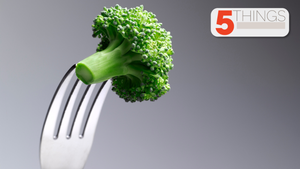Markup in Makeup
Young female consumers are rapidly escalating beauty spending; it is time for supermarkets to revisit the category’s potential.
January 1, 2018
Just when you are starting to feel comfortable paddling around the demographic tidal pool, along comes yet another group to muddy the retail waters—Generation Z, also known as “Centennials.”
Admittedly, it is a bit early to start the hand wringing over a group of customers that are in the 12- to 19-year age group. Many of which are still living on an allowance from their parents.
By all accounts, this is going to be a powerful and challenging demographic. And as the erudite Chinese general and philosopher Sun Tzu observed in his seminal work The Art of War: “If you know the enemy and know yourself, you need not fear the result of a hundred battles.”
This could be shaping up to be one helluva battle for the hearts and minds of a generation of digital natives that some observers feel will be as different from their Millennial predecessors as that generation was from Baby Boomers.
However, this column is not just about the numbers, social media or technology. And it is not about how to sell this demographic more food or how to enhance their culinary experience. It is about a category that has been eliminated, or largely ignored, by many retailers—beauty products and how they could be the on ramp for a huge new customer base.
GenZ’s buying power is already about $44 billion, and 75 percent of them say they spend more than half of the money available to them monthly, according to a study conducted by the IBM Institute for Business Value. Just as important is the fact that while they have never known life without the internet or mobile phones, 98 percent of them shop in stores—and like it.
A big part of that visit—and something that could be shared by supermarkets—is the rapidly escalating beauty spending by young female consumers. But if you think a 4-foot run of low priced, J-pegged, shrink-wrapped products is going to cut it, think again.
This is not a new concept. Supermarkets have been wrestling with price and assortment on cosmetics and other beauty products since the first combo stores and supercenters opened their doors in the mid-1970s. Over the years, these products have been eclipsed by other categories at most conventional stores. But it is time to revisit the potential.
According to Deep Dive, a sort of think-tank for the Fung Retail Group, teenage girls are spending about $2.3 billion on the core beauty categories, including skincare, cosmetics and fragrances. Interestingly, while much of this purchasing is going to more upscale brands like MAC and Urban Decay, traditional drugstore or supermarket budget and mass market brands like Maybelline and Cover Girl are still favored brands, and stores like Target and Walmart are among their favorite retailers.
For one thing, the American Psychological Association has found that social media which is so important to GenZers in their formative years and the platform they most turn to for advice, is pressuring more teen girls to look good, a factor that is going to drive up spending on beauty products now and into the future. Even now, spending in this category is at its historical high and there is nowhere to go but up.
If those of you without teenage daughters or granddaughters are wondering about which categories and products to focus on, Mintel reports it this way: “While Millennial women are seeking selfie perfection through contouring and highlighting, their little sisters are embracing a more natural look. Natural-looking hair and makeup are on trend.”
The company’s survey found that almost three quarters of girls 12-14, and 69 percent of those 15-17 prefer the natural look. A survey on frequently used beauty products among girls 12 to 17 found that nail care and nail polish, lip care, mascara, foundation, concealers and facial cleansing were at the top of their shopping lists.
If you look at the overall picture, 37 percent of GenZers are spending money weekly on beauty products and 80 percent are spending on food. There must be a way for supermarkets to tie these two together.
About the Author
You May Also Like




